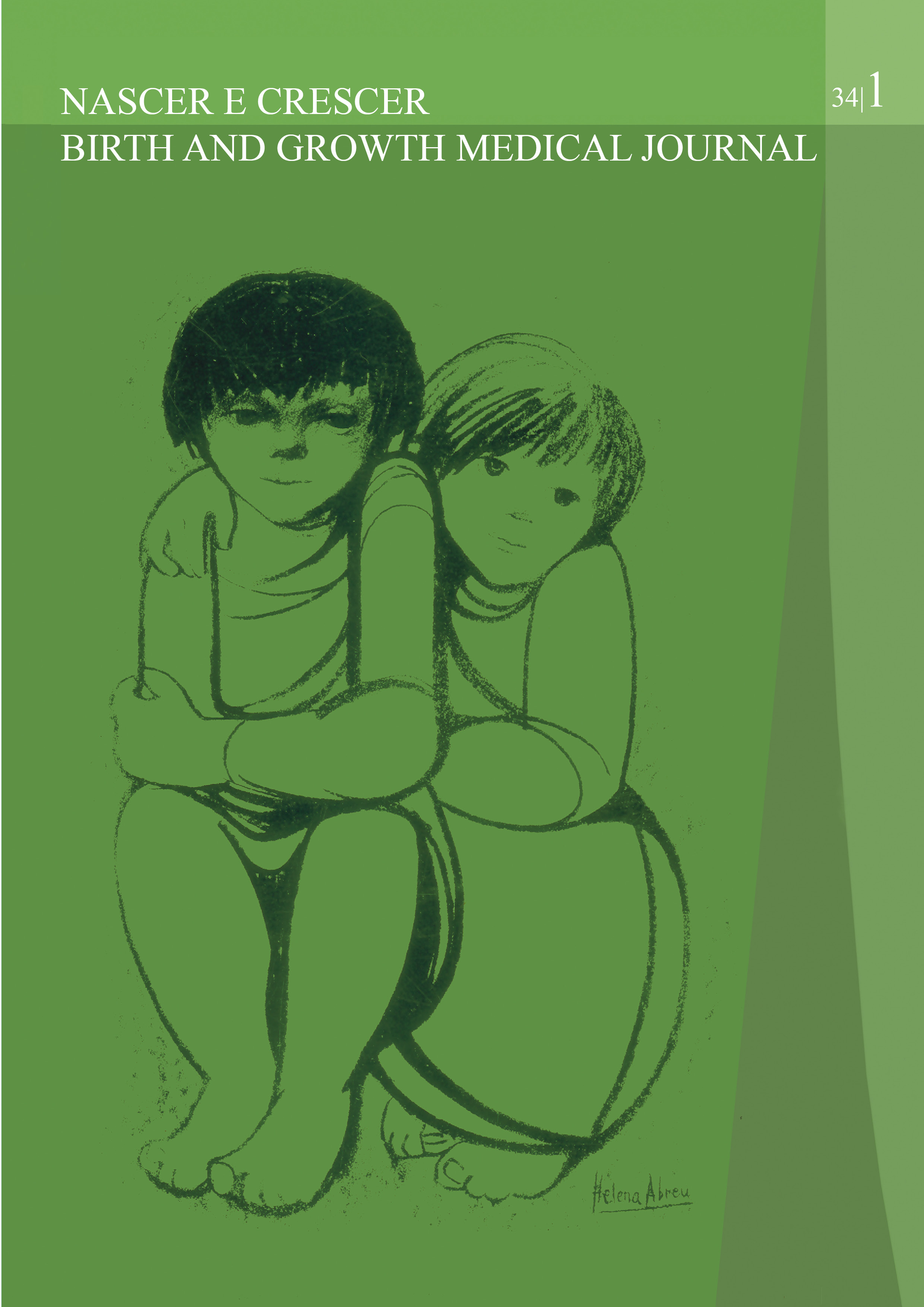Scurvy in a 5-Year-Old Girl - A Re-emerging Diagnosis
DOI:
https://doi.org/10.25753/BirthGrowthMJ.v34.i1.30027Keywords:
ascorbic acid, behavioral disorder, neurodevelopmental delay, restrictive diet, scurvy, vitamin C deficiencyAbstract
Monotonous diets may lead to various nutritional deficits, which in turn can result in diseases such as scurvy.
A five-year-old girl presented with a one-month history of anorexia, inability to walk, and bleeding gums. Her daily dietary intake consisted almost exclusively of chocolate milk at every meal. Due to frequent missed appointments with her family doctor and her parents' limited parenting skills, the condition remained undiagnosed for nearly two years. Serum vitamin C levels were undetectable, while vitamin D and iron levels were low. Knee X-rays revealed Trümmerfeld zones, Frankel lines, and an enlarged metaphyseal margin. The diagnosis of scurvy was established, and a multidisciplinary approach was implemented, including iron, vitamin C, and vitamin D supplementation, alongside behavioral intervention. The patient achieved full recovery.
Although scurvy is generally a rare disease, its prevalence has been increasing due to unbalanced and monotonous diets. It can cause a wide spectrum of clinical manifestations, and its diagnosis is based on anamnesis, physical examination, and complementary tests. Treatment involves vitamin C supplementation, with an overall excellent prognosis.
Downloads
References
Pazirandeh S, Burns DL. Overview of water-soluble vitamins. Uptodate. 2022 [consulted in december 2022]. Available from: https://www.uptodate.com/contents/overview-of-water-soluble-vitamins.
Agarwal A, Shaharyar A, Kumar A, Bhat M, Mishra M. Scurvy in pediatric age group - A disease often forgotten?. J Clin Orthop Trauma. 2015; 6(2):101-107. doi: https://doi.org/10.1016/j.jcot.2014.12.003.
Brambilla A, Pizza C, Lasagni D, Lachina L, Resti M, Trapani S. Pediatric Scurvy: When Contemporary Eating Habits Bring Back the Past. Front Pediatr. 2018; 6:126. doi: https://doi.org/10.3389/fped.2018.00126.
Chalouhi C, Nicolas N, Vegas N, Matczak S, Jurdi H, Boddaert N, et al. Scurvy: A New Old Cause of Skeletal Pain in Young Children. Front Pediatr. 2020; 8:8. doi: https://doi.org/10.3389/fped.2020.00008.
Nastro A, Rosenwasser N, Daniels SP, Magnani J, Endo Y, Hampton E, et al. Scurvy Due to Selective Diet in a Seemingly Healthy 4-Year-Old Boy. Pediatrics. 2019; 144 (3): e20182824. doi: https://doi.org/10.1542/peds.2018-2824.
Alqanatish JT, Alqahtani F, Alsewain WM, Al-kenaizan. Childhood scurvy: an unusual cause of refusal to walk in a child. Pediatric Rheumatology. 2015; 12:23. doi: https://doi.org/10.1186/s12969-015-0020-1.
Fortenberry M, Rucker H, Gaines K. Pediatric Scurvy: How an Old Disease Is Becoming a New Problem. J Pediatr Pharmacol Ther. 2020; 25(8): 735-741. doi: https://doi.org/10.5863/1551-6776-25.8.735.
Alves N, Aguiar M, Barbosa H, Magalhães C, Alves M. Escorbuto na criança. Brasília Med. 2011; 48(1):108-111.
Białek-Dratwa A, Szymańska D, Grajek M, Krupa-Kotara K, Szczepańska E, Kowalski O. ARFID-Strategies for Dietary Management in Children. Nutrients. 2022 Apr 22;14(9):1739. doi: https://doi.org/10.3390/nu14091739.
Zimmerman J, Fisher M. Avoidant/Restrictive Food Intake Disorder (ARFID). Curr Probl Pediatr Adolesc Health Care. 2017 Apr;47(4):95-103. doi: https://doi.org/10.1016/j.cppeds.2017.02.005.
Bourne L, Bryant-Waugh R, Cook J, Mandy W. Avoidant/restrictive food intake disorder: A systematic scoping review of the current literature. Psychiatry Res. 2020 Jun;288:112961. doi: https://doi.org/10.1016/j.psychres.2020.112961.
Downloads
Published
How to Cite
Issue
Section
License
Copyright (c) 2025 Aida Correia de Azevedo

This work is licensed under a Creative Commons Attribution-NonCommercial 4.0 International License.
Copyright and Authors' Rights
All articles published in Nascer e Crescer - Birth and Growth Medical Journal are Open Access and comply with the requirements of funding agencies or academic institutions. For use by third parties, Nascer e Crescer - Birth and Growth Medical Journal adheres to the terms of the Creative Commons License "Attribution - Non-Commercial Use (CC-BY-NC)".
It is the author's responsibility to obtain permission to reproduce figures, tables, etc. from other publications.
Authors must submit a Conflict of Interest statement and an Authorship Form with the submission of the article. An e-mail will be sent to the corresponding author confirming receipt of the manuscript.
Authors are permitted to make their articles available in repositories at their home institutions, provided that they always indicate where the articles were published and adhere to the terms of the Creative Commons license.


